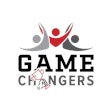Hiring an architectural team begins with a well-devised selection process

If you're looking for ways to secure part-time help at the front desk of your recreation center, you have plenty of options. You can get the word out through your staff members, you can post a sign or you can always place a classified ad.
Putting together a project team at the beginning of a building process is a different story. No staff exists to spread the word, there's no place yet to hang a sign and the selection process involved in choosing an architectural team is far too complicated to encapsulate in three lines of type.
There is, simply, a reason why it's called a "formal selection process." Hiring consultants, architects, engineers and construction firms can be tricky for people hoping to build a recreation center, particularly since most people in this position have never faced such a task before. While the process described below can be used in a variety of settings (for example, the search for high-level administrators), it will be most helpful to those athletic and recreation professionals preparing to select a firm to assist them in a building project.
The written document that is distributed to firms interested in doing the work is known by two terms that, while slightly different in meaning, tend to be used interchangeably. It doesn't help that they look almost identical: RFP ("Request for Proposals") and RFQ ("Request for Qualifications"). As indicated by the name, RFQ refers to the process of soliciting qualifications, often with limited submission requirements, from a broad group of applicants, after which a more stringent round of refinement to a "short list" will be undertaken. An RFP, on the other hand, typically requires firms to include more detail in their written submission, and often leads directly to a short list of firms to be interviewed. Use of one or both documents will depend upon the size of the initial pool of applicants, the complexity of the work requested and the amount of detail required for the selection committee to make a decision. This article will focus on the more comprehensive RFP, and leave it to readers to simplify their request documents in response to their circumstances.
The first and most important step in a well-managed selection process is the establishment of the selection committee. Most committees are composed of between six and 15 people holding key positions throughout the organization, and their role is to oversee the process and review materials submitted by the professional firms they hire (and those they're considering hiring).
The selection committee's first task is often to decide which firms will be solicited. For those working for public institutions such as municipalities, universities and schools, there are frequently requirements to publicly advertise the RFP so that any interested party can submit a proposal. Others will consider a variety of factors, including geographic location and depth of experience. Recommendations from colleagues, as well as information in industry publications like this one, will serve as valuable resources in the process of identifying firms to receive the RFP. Above all, the committee is charged with the management of an open and fair process, in which all participants have equal opportunity and access to information that allows them to demonstrate their capabilities.
As an RFP can be used to hire a range of professional firms that will work on various stages of the project, a broad understanding of the building-development process is helpful to gain an understanding of when and how often RFPs must be solicited. While there are many variations, the steps of building a facility typically include:
• The feasibility phase, during which an idea is tested, a concept for the project is developed and necessary approvals for funding are achieved.
• The programming phase, during which the approved concept is further defined and architectural design requirements are established.
• The design phase, during which the architectural and engineering team documents all of the details of a building that meet the established design requirements of site, program, budget and schedule.
• The construction phase, during which the structure is built in accordance with the architectural design documents.
In some cases, one firm can provide more than one of these services. Often, however, each step requires selection of a professional firm. For this reason, it is critical that each phase serve as preparation for the next one. In preparing each step for the next, remember that the first two phases focus on seeking, defining and documenting the design parameters for the project, while the latter two phases seek to solve the challenges posed by the design requirements. Knowledge of the unique role of each step is very helpful in the selection of the right professional partner.
A key role played by the selection committee is to draft a written RFP that is both concise and complete, with clear identification of the submission requirements.
While numerous circumstances dictate content differences between RFPs, the sequence and subject areas should remain consistent. The establishment of a consistent formatting requirement for all submissions will dramatically shorten the time required for review and facilitate easier comparison between proposals. The following format should prove sufficient to compare the relative qualifications and capabilities of professional firms:
1. PROJECT BACKGROUND The first goal of the project background description is to establish the owner's dedication and excitement for the project. This can be shown through a brief description of the institution's background, the project planning process (the "how we got here" section), as well as the importance of the project to the owner's mission, goals and constituents (the "why we are embarking on this project" section). The second objective is to convey the size, scale, scope and budget of the project. This should include a list of the major tasks to be completed, components of the work, and the goals and objectives of the final product. A well-defined, strongly supported project with a well-educated ownership team represents an enticing project for consultants, design professionals and engineers alike.
2. SUBMISSION REQUIREMENTS Establishing requirements for the RFP allows the owner to specify the parameters of the information to be submitted by the participants. These requirements also act as the structure for the review of the proposals throughout the selection process. Submission requirements should be developed with the goal of acquiring information about the proposal team specific to the owner's project and the expectations for the work to be completed. These requirements set the framework for the comparative exercise used to evaluate each proposal based on the same criteria. Here are three important categories of information that firms responding to the committee's RFP should address:
• Team information and firm data. General team information is necessary to understand the key players involved in the project, and should highlight a firm's in-house capacity and sub-consultant capacities, as well as the overall stability and expertise of the proposed team. This section should include:
1. Names, addresses, and roles of each firm (including all sub-consultants).
2. A firm profile, including firm ages and histories, firm sizes (meaning the number of professionals by discipline, currently and one year ago), firms' areas of specialty/concentration, and the current workload projected for each firm over the next two years.
3. Description of the team organization and personnel qualifications, including identification of the single point of contact for the team, an organizational chart illustrating reporting lines and names and titles for key participants proposed by the team (including consultants), and résumés for each key participant on the team. Résumés should include a definition of each person's role, relevant project experience and current workload over the next two years.
• Relevant experience and capabilities.
This information will be vital to judge each team's depth and breadth of experience. The committee should select key areas of experience (typically from three to five) for which sample projects should be presented. Some of these might include experience working with similar clients, working with neighborhoods and zoning parameters, working on projects of similar scale and working on renovation projects.
• Approach. This section should give insight into the approach, methodology and operational paradigms that the team utilizes throughout the scope of its work. The firm's approach to the project, its team's channels of communication and the fee proposal for completion of the work should all be outlined. The detail and information provided within the structure of the fee proposal will show the type and quality of services, the time allotted to the project and sensitivity of the proposal to the needs of the owner. The proposed fee should be based on the information in the project background description, as well as additional information pertaining to the scope of services necessary to meet the goals of the project.
3. SELECTION PROCEDURES This section should outline the submission and selection process, and act as a timeline for all parties involved. Critical dates should be set by the committee in order to keep the process moving forward and to keep all parties informed. General information as it pertains to the format of the proposal and proper protocols to be followed for proper submission should also be outlined in this section.
Submittal parameters should include establishment of a due date and time (ideally between two and four weeks), format parameters and quantity of submittals. Selection parameters should include a selection schedule summary that notes when RFPs are to be received by firms, when proposals are due, when organizations will review proposals, when firms will be notified of short-list status, when interviews will take place and the date, if any, of relevant contract deadlines.
This section should also include any disclaimers meant to protect the owner. An example: "The institution reserves the right to reject all proposals at any point during this selection process."
4. EVALUATION CRITERIA SUMMARY The evaluation criteria should mirror the submission criteria to allow for consistency and fairness to all parties involved. These criteria (usually between four and 10) should follow the format of the RFQ as well, to help establish the format for the submittals and evaluation strategy to be completed by the team. It is important to restate the criteria briefly at this time to communicate to the submission team that the format is of the utmost importance to the success of each submission. Typical language should be as follows:
• Team information will be evaluated on the basis of the experience of the individuals assigned by each firm to the team.
• Experience will be evaluated on the basis of the team's ability to meet the criteria selected by the committee.
• Approach will be evaluated on the team's demonstrated awareness issues, process, management procedures, past success and fee as related to project type.
5. CONTACT INFORMATION All questions should be directed to a single point of contact as appointed by the committee. This individual will field all questions and clarifications, and disseminate the appropriate information to all RFP recipients. The single point of contact guarantees consistent information and controlled access to the project. The RFP should specify the name and title of the primary contact, that person's contact information, and the preferred methods of communication (telephone, E-mail, written).
6. TIPS FOR DRAFTING RFPS• Verify project team members against project samples submitted. It is important that the team (not just the firm) dedicated to your project has the experience and skills necessary to perform the work. Many times, the projects profiled in a proposal are not consistent with the team provided.
• Utilize a simple RFQ or other method to pre-approve, and therefore limit the number of firms that are sent the RFP. Shoot for an RFP list of between eight and 20 firms.
• The same evaluation criteria included on the RFP should be summarized on a grading sheet that is used by the committee when reviewing proposals.
• Provide participants sufficient project background information to allow them to demonstrate their creativity and how they would undertake work on the project.
• Allow participants adequate time to draft submissions without slowing the project's momentum. Two to four weeks is usually sufficient.
• Request that firms include in their RFP a non-binding estimate of the scope of work and fees, as it will be helpful during later contract negotiations.
• For short-listed firms, request that representatives of the proposed team participate in the interview. It is important for the committee to assess the skills and capabilities of not only the firm's leadership, but of the project manager and staff involved with the day-to-day work.
While a significant amount of work has been required just to establish the list of bidders and write the RFP, work still remains until a final selection can be made. By this time, the committee has reviewed a large number of submissions and has narrowed down the choices. Typically, the remaining shortlisted firms are all qualified to do the work. It is now up to the committee to meet the people who will do the work and review each firm's approach to see who is the best fit.
How the committee handles this deeper evaluation - the extent to which it will deliberate - will depend on the "feel" it has of the different candidates and their previous work. The committee reviews and evaluates the firms' RFPs and any other materials gathered to that point, sets up between three and five interviews, conducts the interviews, checks references with satisfied (or unsatisfied) building owners, and occasionally even takes tours of firms' previously designed projects. In the end, each committee will give greater or less weight to each of these areas, with the final decision suitably idiosyncratic. After notifying the first-choice firm (and presumably receiving the verbal equivalent of a handshake), the negotiation of the contract begins. Design and construction is just around the corner.
Assuming the committee has done its work well, the final decision will probably not be agonizing. After all, there is no one "correct" firm - if there were, there wouldn't be so many firms in existence, not to mention such a range of design evident in the sports and recreation field. While each project and each situation is different, a well-managed and disciplined process will afford the greatest chance of selecting the right fit for each institution's needs.
Bradford Noyes (bnoyes@facilityplanners .com) is vice president and Julie Skolnicki is an associate with Brailsford & Dunlavey, 1140 Connecticut Ave. N.W., Suite 400, Washington, DC 20036, 202/289-4455.




































